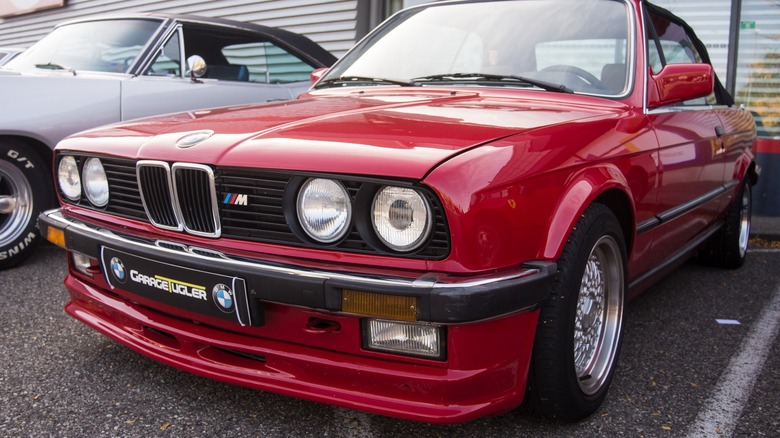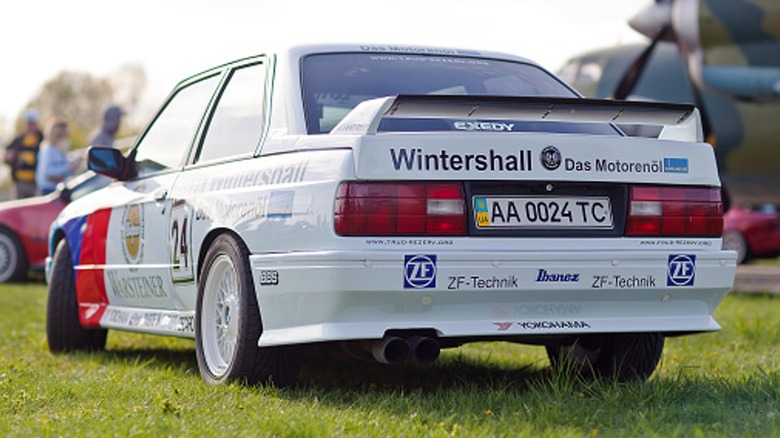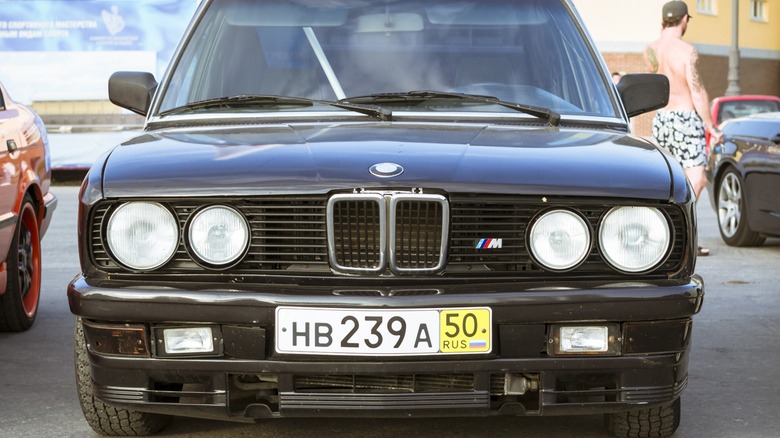All About The Four-Cylinder Engine That Powered The BMW M3 E30
The BMW M3 is an iconic staple of automotive, motorsports, and sports car history. It's been that way for nearly 40 years. Since the introduction of the first M3 in the mid-1980s, BMW's iconic sports coupe (or sedan) has dominated the world of German sports cars and cultivated a cult following that commands monumental prices for historic models like the first-gen E30 BMW M3.
Throughout the M3's history, folks have come to recognize its formula as a rear-wheel-drive layout with an inline-six-cylinder engine and, preferably, a manual transmission. So, it takes a lot of automotive enthusiasts by surprise when they learn that the original M3, the E30, didn't have a six-cylinder engine. Instead, it had a four-cylinder. While four-pot engines often get a bad rap among automotive enthusiasts (though modern engine tech has put a stop to a lot of that), the S14 four-cylinder engine under the hood of the E30 M3 is a work of art. Let's take a look at all its specs and details.
The first BMW M3's Four-Pot Powerplant
Just because it's a four-cylinder engine doesn't mean it isn't potent. The S14B23, the E30 M3's engine, is a standard-layout dual-overhead-camshaft inline four-cylinder. It's naturally aspirated, which means it did not use a turbocharger or a supercharger. With 2.3 liters of displacement, this potent engine put out a whopping 197 horsepower. For reference, that's about the same power output as the 302-cubic-inch V8 found in an equivalent-year Foxbody Mustang.
Vinauto reports that the engine was based on the BMW M10 four-cylinder engine block with the cylinder head from a BMW S38 six-cylinder (the M5 engine) with two cylinders removed. This engine was specifically developed for high-performance applications on both the road and the race track.
One of the most outstanding features of the S14 engine found in the BMW E30 M3 is its use of two individual throttle bodies. This allowed more precise tuning of the air intake system and provided a more rapid throttle response. This was a big contributing factor in the responsive and sporty feel of the first-gen M3 that gained the car its critical acclaim and enthusiasts' praise.
The S14 engine only got more potent with time
Special edition variants of the BMW E30 M3 eventually came to fruition with even more potent versions of the S14 engine. The Ravaglia and Cecotto limited edition M3 models sported another variation, the S14B23. BMW engineers managed to squeeze 212 horsepower out of this variant. Once again, though, it didn't stop there.
The S14B23 EVO2 was yet another upgrade that bumped power to 217 horsepower or 212 horsepower with a catalytic converter. Finally, the most potent version of this engine, the S14B25 EVO3, was bored and stroked to nearly 2.5 liters of displacement and managed an impressive 235 horsepower output.
The BMW S14 engine wasn't just used in the M3, either. It was also found under the hood of the E30 320is and the E36 320i Super Touring, a model BMW built specifically for competition. Though the M3 did become familiar with a six-cylinder powerplant by the next generation, without this high-compression four-cylinder powerplant, we wouldn't have any of the BMW M3 models we know and love today.


